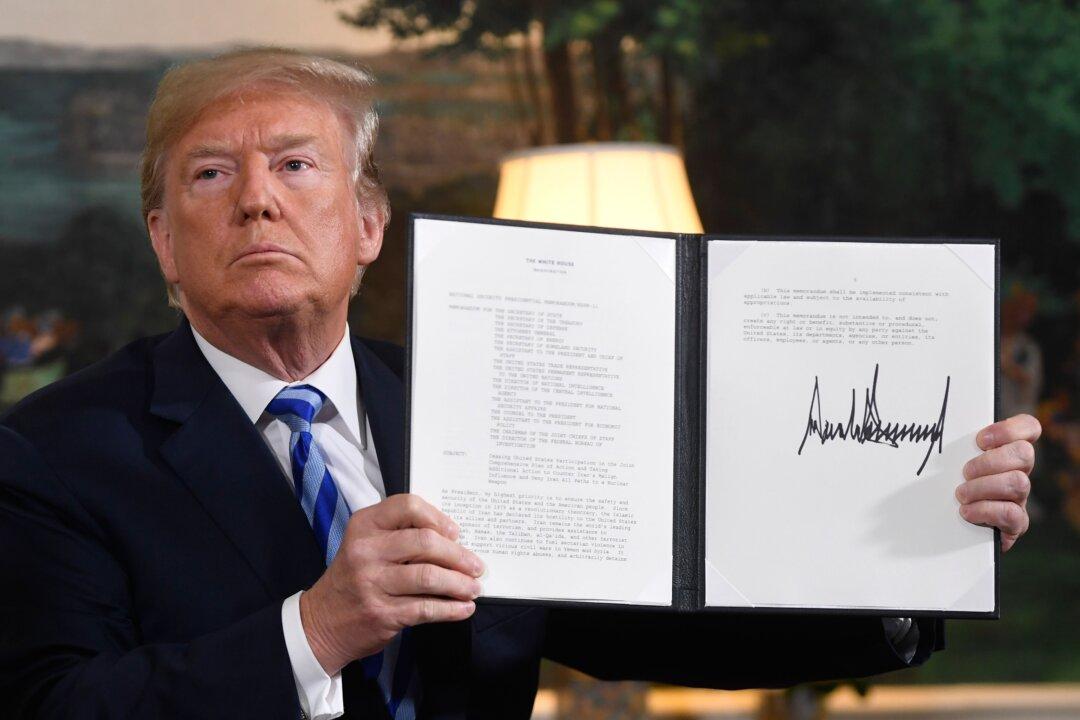President Donald Trump announced he’s withdrawing the United States from the Iran nuclear deal and signed an Executive Order to reimpose tight sanctions on Iran previously lifted as a part of the deal.
“We will be instituting the highest level of economic sanction,” Trump said during the announcement at the White House on Tuesday, May 8. “America will not be held hostage to nuclear blackmail.”





